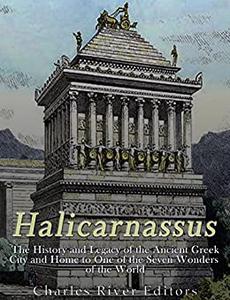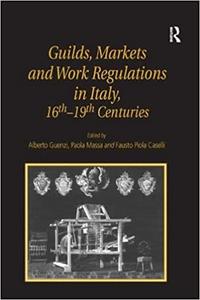Halicarnassus The History and Legacy of the Ancient Greek City and Home to One of the Seven Wonders of the World

Halicarnassus: The History and Legacy of the Ancient Greek City and Home to One of the Seven Wonders of the World by Charles River Editors
English | December 7, 2016 | ISBN: 154087527X | 73 pages | EPUB | 1.66 Mb
*Includes pictures *Includes ancient accounts of Halicarnassus *Includes a bibliography for further reading In 353 BCE, when King Mausolus of Halicarnassus passed away, his sister and queen Artemisia was inconsolable, but she found a way to honor him through finishing a project that they had started together during his life: the construction of a mausoleum that was so marvelous it would later be considered one of the Seven Wonders of the World. She sent messengers across the ancient world to persuade the best sculptors and architects to come to southeast Anatolia to work on the king's memorial, employing only the finest craftsmen and sparing no expense in making the final resting place of Mausolus the finest tomb the world had ever seen. They labored for years, creating marvelous statues of the king's dynasty. This great monumental tomb was completed in the middle of the 4th century BCE so that the name of Mausolus would be famous forever, as indeed it has been ever since. Like one of the other wonders, the Temple of Artemis, the Mausoleum at Halicarnassus was huge for its type of building, being about 150 feet tall and possessing 36 columns of marble on its four sides, nine to a side. Also like the Temple of Artemis, the site of the Mausoleum includes ruins that have been excavated in modern times. Using this, an accurate scale replica has been successfully constructed in Istanbul, Turkey, and pieces of the beautiful sculpture on the Mausoleum have been retrieved. Therefore, it is one of the few Wonders that survived in some form and have directly inspired modern artists and architects. On top of it all, this is the only known major architectural Hellenistic work devoted to a secular theme (the burial of two mortals) rather than religious art dedicated to the Greek pantheon. The themes of the carvings even included many mythical enemies of the Greeks, such as the Amazons and centaurs, and the architecture was a marvel of engineering that was copied by neo-Classical buildings. The ultimate fate of the Mausoleum itself is unknown, though it was known to have survived the city's conquest by Alexander the Great in 334 BCE intact. Pirates who occupied the city in the 1st century BCE also left it unharmed, and though a series of earthquakes had reduced it to foundations by the 15th century CE, it was still intact enough to be considered a "wonder" by a Christian pilgrim, the Archbishop Eustathius of Thessalonica, in the 12th century. Unfortunately, the arrival of the Knights of St. John (the Hospitallers) in Rhodes and Bodrum spelled doom for the great structure. They used materials from it to reinforce their castle at Bodrum when it was threatened by the Turks in 1522 and burned the marble for lime, though at least they did retrieve and install the best of the sculptures in their castle. The burial chamber of Mausolus and Artemisia, which had been underground, was also looted at some point over the centuries, though husband and wife were likely cremated in the Greek fashion and buried in urns. The famous marbles were also looted in the 19th century during a three-year expedition by English archeologist Sir Charles Thomas Newton and carted off to the British Museum. Who was Mausolus, and what role did Halicarnassus serve in his kingdom? What were the city's origins, and what occurred after the mausoleum was completed? And how, exactly, did it come to be considered one of the Seven Wonders of the World? Halicarnassus: The History and Legacy of the Ancient Greek City and Home to One of the Seven Wonders of the World looks at the city and its most famous structure. Along with pictures depicting important people, places, and events, you will learn about Halicarnassus like never before.


![S.T.A.L.K.E.R. 2 / STALKER 2: Heart of Chornobyl - Ultimate Edition (2024) [+UPDATE 23.12.2024 - v1.1.3] ElAmigos / Polska wersja językowa](https://i.postimg.cc/Zqd8RWGY/UZG8PBE.jpg)



















































![David Gilmour - Luck and Strange (2024) [FLAC]](https://i.imgur.com/everaBc.jpeg)
![Męskie Granie Orkiestra - Męskie Granie 2024 (2024) [FLAC]](https://i.imgur.com/FAyOxrM.jpeg)
![The Rolling Stones - Hackney Diamonds (2023) [FLAC]](https://i.imgur.com/wCkyyUN.jpg)
![Lady Gaga - Harlequin (2024) [FLAC]](https://i.imgur.com/dcgIA8D.jpeg)
![Natalia Kukulska - Dobrostan (2024) [FLAC]](https://i.imgur.com/bdljG3O.jpeg)
![Kaśka Sochacka - Ta druga (2024) [FLAC]](https://i.imgur.com/hORQKvn.jpeg)
![Kuba Sienkiewicz - Pani Bóg (2024) [FLAC]](https://i.imgur.com/qijCx8Z.jpeg)
![Lanberry - Heca (2024) [FLAC]](https://i.imgur.com/8P7QfeR.jpeg)
![Sara James - PLAYHOUSE (2024) [FLAC]](https://i.imgur.com/m4f8OKg.jpeg)
![Grzegorz Hyży - EPILOG (2024) [FLAC]](https://i.imgur.com/8DA2sBr.jpeg)
![Myslovitz - WIECZORAMI CHŁOPCY WYCHODZĄ NA ULICE (2024) [FLAC]](https://i.imgur.com/l9mMtIG.jpeg)
![Krzysztof Zalewski - ZGŁOWY (2024) [FLAC]](https://i.imgur.com/vh48RAc.jpeg)
![Krzysztof Cugowski - Wiek to tylko liczba (2024) [FLAC]](https://i.imgur.com/SBzgqe2.jpeg)
![Nosowska - Kasia i Błażej (2024) [FLAC]](https://i.imgur.com/mObvVXQ.jpeg)
![sanah - Pianinkowe Kaprysy (2024) [FLAC]](https://i.imgur.com/pVjjPAa.jpeg)
![Kwiat Jabłoni - Pokaz slajdów (2023) [FLAC]](https://i.imgur.com/diERHfZ.jpg)
![Robert Cichy - Spacer po Warszawie (2024) [FLAC]](https://i.imgur.com/ixleU9o.jpeg)
![Viki Gabor - Terminal 3 (2024) [FLAC]](https://i.imgur.com/Q1KCnDs.jpeg)
![Sanah - Kaprysy (2024) [FLAC]](https://i.imgur.com/71OZm4h.jpeg)
![Męskie Granie Orkiestra - Męskie Granie 2023 (2023) [FLAC]](https://i.imgur.com/U4YHo8d.jpg)




